Error E21 in Weissgauff washing machine
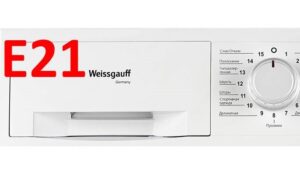 Error E21 displayed on the display in the Weissgauff washing machine indicates problems with the drainage. The washer either drains the water too slowly or does not drain at all. What to do in such a situation? Where to start diagnosing SMA? Let's look into the nuances.
Error E21 displayed on the display in the Weissgauff washing machine indicates problems with the drainage. The washer either drains the water too slowly or does not drain at all. What to do in such a situation? Where to start diagnosing SMA? Let's look into the nuances.
Maybe it's a clog
It is very difficult to immediately name the reason for a non-functioning drain. Especially if there is no data on the behavior of the washing machine immediately before the failure. It is important to have an idea at what stage of the SMA cycle “stuck”, whether the pump started working, what sounds the machine made when trying to “accelerate” the pump. Once you have the information, you can identify the problem by its “symptoms.”
If there is no data on the “behavior” of the MCA immediately before the breakdown, you will have to sequentially check all elements of the Weissgauff drainage system.
Usually the machine cannot discharge water into the sewer due to problems with the drain filter or pump. The filter element gets clogged with debris that gets into the washer, the pump burns out or is blocked by hair wrapped around the impeller. The check is carried out from simple to complex, so the “trash bin” is inspected first.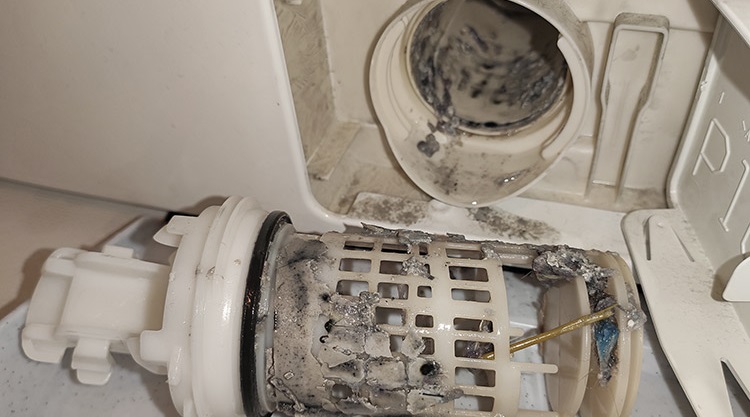
If there are problems with draining, the SMA hangs with a full tank. Therefore, the first thing you have to do is empty the machine. Waste water is drained through a garbage filter. The algorithm of actions will be as follows:
- de-energize the Weissgauff SMA;
- disconnect the washing machine from the water supply;
- move the device away from the wall or out of the niche;
- remove from the machine everything that can deteriorate during contact with water (powders, carpets);
- cover the floor near the washing machine with rags;
- open the technical hatch (it is located in the lower right corner of the case);
- find the garbage filter;
- tilt the body of the machine back so that the legs come off the floor by 5-7 cm;
- Place a container under the device, in the area where the garbage filter is located, to collect water.
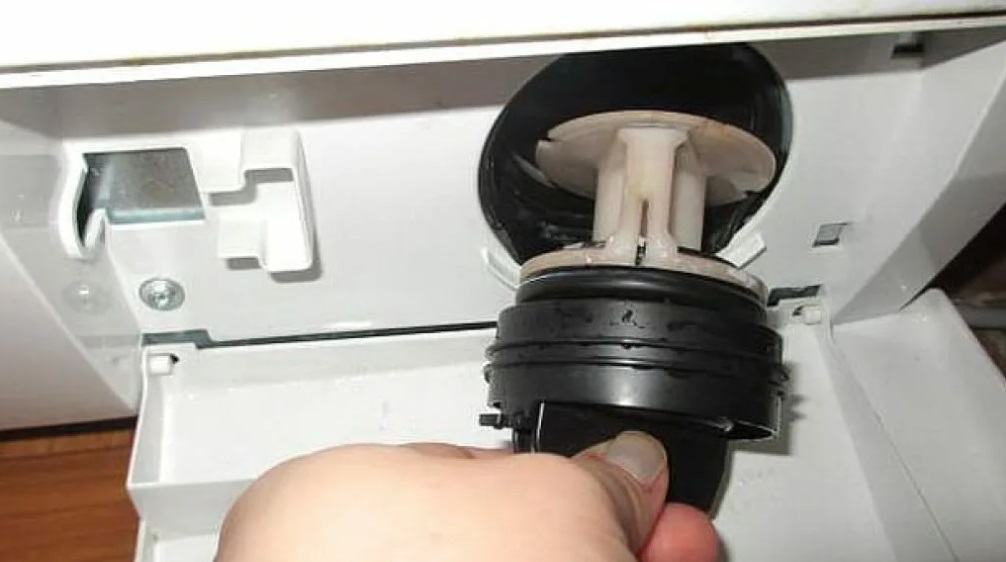
Next, you need to carefully unscrew the “trash can”. First, the plug is turned half a turn, clockwise. Wait until some of the water has drained and the pressure has weakened, then remove the filter completely. There is no need to rush, otherwise a stream of waste liquid will pour out of the machine.
After this, you need to clean the drain filter. If there is little contamination, it will be enough to rinse the spiral under the tap. Contact with hot water should be avoided - this can lead to deformation of the trash can.
Sometimes you can find a thick layer of limescale and scale on the garbage filter. In this case, the part will have to be soaked in warm water with the addition of citric acid. The dirt is then removed with a toothbrush.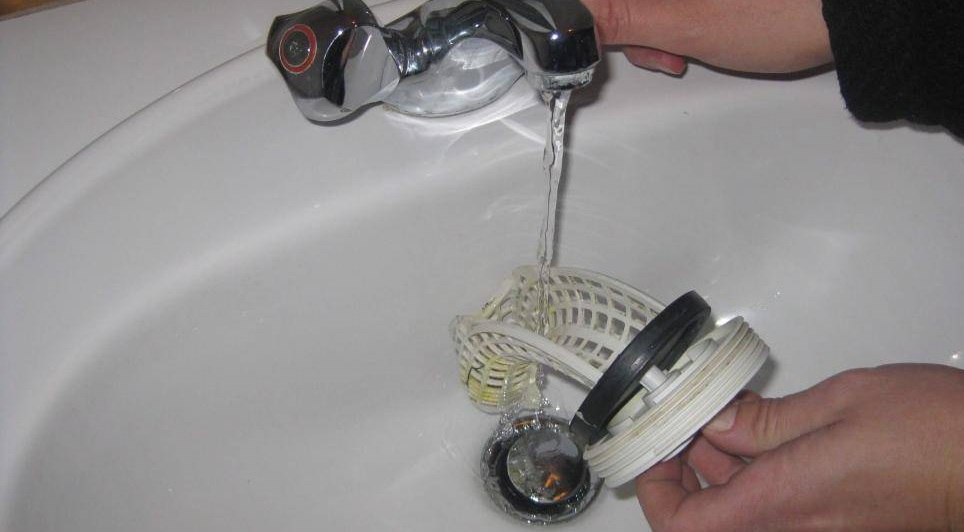
Also be sure to clean the drain hole that appears after removing the debris filter. In addition to dirt, you can find a sock or other foreign objects in it. If there is scale inside, remove it with a toothbrush or sponge with an abrasive surface.
What to do if the garbage filter is clean and the problem is definitely not there? Next, examine the Weissgauff CMA drain hose for blockages. Having felt the “plug” in it, rinse the sleeve under running warm water.
It should not be ruled out that the problem may not be with the machine at all, but with a clogged sewer pipe or siphon. Therefore, look at how the water leaves the bathtub or sink. If the drain is also broken, call a plumber.
Let's pay attention to the pump
If no blockages are found, you will have to check the Weissgauff SMA drain pump.It is he who is responsible for pumping waste liquid from the tank into the sewer system. If the pump is clogged or broken, draining water becomes impossible. During diagnostics, you will have to dismantle and inspect the element, and, if necessary, test it with a multimeter.
Owners of Weissgauff washing machines are lucky. Getting to the pump on such washing machines is very simple - just look under the bottom of the device. To dismantle the pump yourself, you will need:
- de-energize the SMA, close the shut-off valve, disconnect the machine from communications;
- drain the water from the tank by unscrewing the garbage filter;
- lay the machine on its side (it is important to place the washing machine on the side where the powder receptacle is located - this will prevent moisture from getting on the control module);
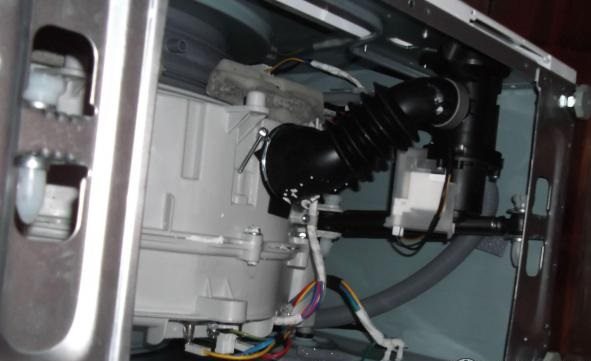
- disconnect the bottom of the case (some Weissgauff models have Aquastop protection, which also needs to be reset);
- find the drain pump;
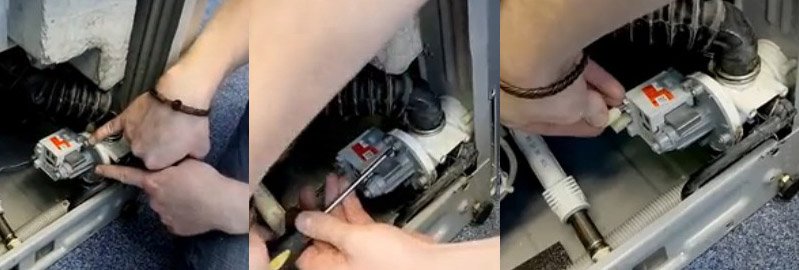
- loosen the bolts securing the pump;
- disconnect the wiring and pipes from the pump;
- turn the pump from right to left, then lightly press the device deep into the body;
- remove the pump from the grooves and pull it out of the machine.
Before you begin disassembling the SMA, be sure to turn off the power to the equipment, and it is also advisable to wear protective gloves.
After dismantling, inspect the pump. It is usually very difficult to visually determine the nature of the malfunction. You will have to disassemble the pump, clean it, and test it with a multimeter. We will tell you in what order the diagnostics are performed.
Unscrew and clean the pump
Often, fault code E21 is displayed on the display of a Weissgauff washing machine precisely because the drain pump is not working correctly. But it's not always a matter of failure. Sometimes the pump becomes clogged with debris and therefore cannot function properly. Repairing a device means cleaning it.
The pump housing is practically not contaminated. Usually, the operation of the system is stopped by hair and threads wound around the screw. To restore the pump, you will need:
- Unscrew the bolts on the drain pump housing;
- halve the body;
- find the shaft with the impeller;
- Remove threads, lint and other debris from the blades.

The impeller is also checked. It should spin freely, with little tension, without “flying off” the shaft. If a part becomes loose and falls off, it must be fixed or replaced entirely.
You should immediately clean the pump seat – the volute. After this, you can assemble the pump and fix it in the washing machine body. Next, the machine returns to a vertical position, connects to communications and starts in test mode. If the water drains smoothly from the tank, then the problem is solved.
The pump coil is acting up
It is better to immediately test the pump with a multimeter after cleaning it. The tester is switched to resistance measurement mode, its probes are applied to the pump contacts. Next, the readings on the device screen are evaluated:
- resistance from 150 to 260 Ohms - everything is in order, the pump is working;
- 0 – failure due to a short circuit;
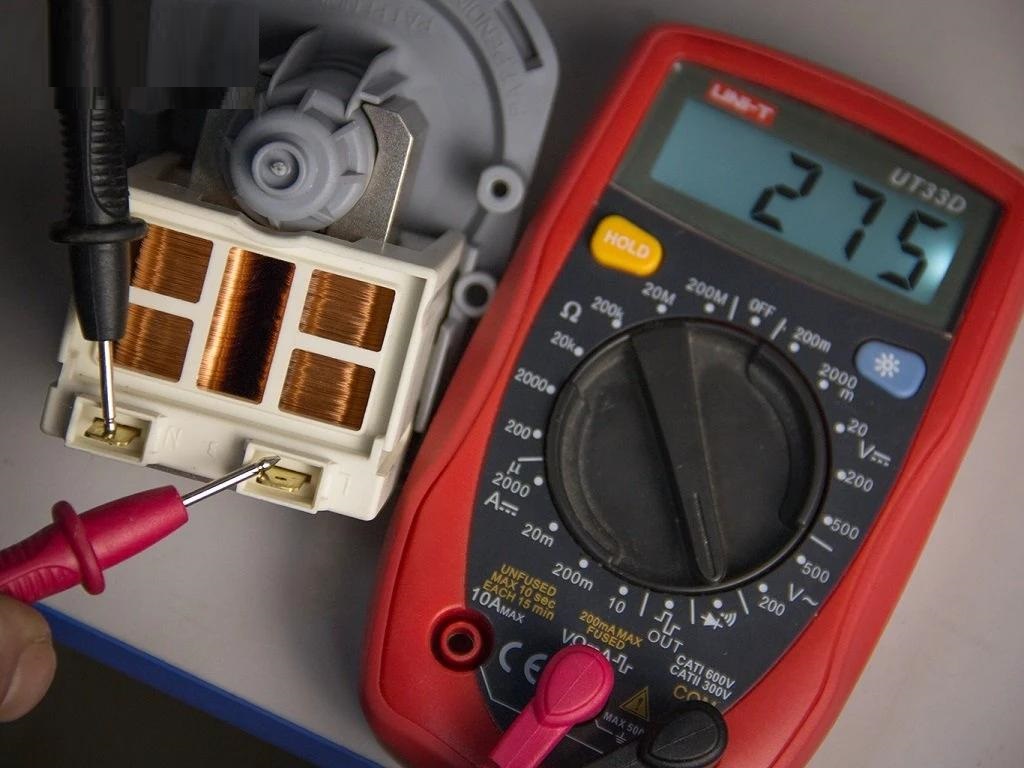
- less than 150 Ohm - failure due to winding breakage.
A burnt-out pump cannot be repaired; you will have to buy and install a new pump.
You should not even try to restore a broken winding or eliminate the consequences of a short circuit. It is easier and more reliable to purchase a new pump - the part is inexpensive. When purchasing, you need to focus on the model and serial number of the Weissgauff washing machine. You can come to the store with a dismantled pump and pick up an analogue.
After installing the new pump, reassemble the machine in reverse order and run the test cycle.Observe the operation of the washing machine. The drain should be restored.
If even replacing the pump did not help clear the fault code, then the problem is in the Weissgauff CMA control module. To diagnose the electronic unit, you will have to invite a service center specialist. It will not be possible to repair the board yourself without sufficient knowledge and experience.
Interesting:
1 reader comment

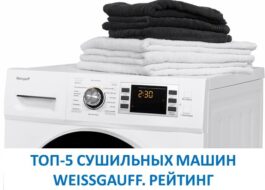



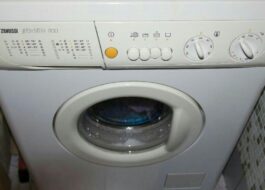















Thank you very much. Everything is described step by step. I started the washing machine in 10 minutes.